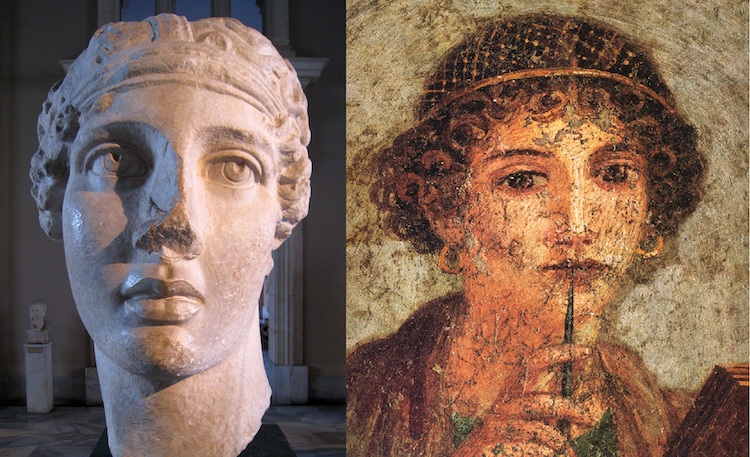The first woman writer and poet: Who is Sappho?
The pioneer of lyric poetry in Ancient Greece, the first female poet Sappho from Lesbos, her life and poems. Most of Sappho's poetry is now lost, and what is extant has mostly survived in fragmentary form; only the "Ode to Aphrodite" is certainly complete.

The Greeks settled on the shores of the Aegean Sea in the 7th century BC and began to deal with trade. During this period, there were transitions from mythological narrative to individual experience, and lyric poetry emerged alongside epic poetry, in which emotions were expressed in an enthusiastic language. At the culmination of this poem was Sappho as a woman for the first time.
Sappho (630 – 570 BC) was an Archaic Greek poet from Eresos or Mytilene on the island of Lesbos. Sappho is known for her lyric poetry, written to be sung while accompanied by music. In ancient times, Sappho was widely regarded as one of the greatest lyric poets and was given names such as the "Tenth Muse" and "The Poetess".
Sappho was born in Lesbos between 630-612 BC. She belonged to a wealthy family and as a result, she had a rebellious and out-of-pattern character. She was married to a man named Cercylas and they had a daughter named Cleis. She founded a school for young women in Lesbos where social relations, general culture, walking, speaking, and dancing were taught. After the death of her parents, she devoted herself to poetry and formed the basis of lyric poetry, especially poetry about love.
Most of Sappho's poetry is now lost, and what is extant has mostly survived in fragmentary form; only the "Ode to Aphrodite" is certainly complete. As well as lyric poetry, ancient commentators claimed that Sappho wrote elegiac and iambic poetry. Three epigrams attributed to Sappho are extant, but these are actually Hellenistic imitations of Sappho's style.
Sappho spoke through her works clearly and innately. She used an unlimited and creative style in her works. She used bold analogies and new meter scales. Thus, her works have survived and been criticized for ages, leaving all their peers behind. Her works were mainly in the form of poetry, and in her poems, she used the dialect of the Aeolian tribe, one of the four Greek tribes that lived in Ancient Greece. She gave works consisting of one 11 and one 5 verse. She was described as the most important lyric poet during and after her lifetime. According to rumors, there were 9 poetry books and only the first book consisted of 1320 lines.
In her poems, she generally described nature and beauty and wrote love poems for both sexes. Most of her poems presented fragments of the daily lives of women who had a high level of education and had traveled. Therefore, it was thought that Sappho liked both men and women, although this could not be proven. The physical depictions of Sappho were also made in different ways as beautiful or ugly according to the painters and narrators who liked and disliked her. Today, the word "lesbian" is thought to have originated on the island of Lesbos, where Sappho lived. Sappho was even nicknamed "Sappho from Lesbos" to describe her relationship with women.
Sappho's time was when historiography was not yet developed. The recorded events were only the workings of cities and the deeds of powerful men. Therefore, information about Sappho's life is limited and unproven. Most of what is known has been put forward by making use of her poems.
Many of her poems were burned in 1073 by the order of Pope Gregory VIII in Istanbul during the Roman Period. The language in which she wrote her poems ceased to be used after Sappho's time and became an old language. For this reason, fewer people now reproduce and read what they have written. Some of the remnants were accidentally found in a destroyed church in the Egyptian city of Faiyum. Some were discovered among the pages of decomposed papyrus in Egypt, in the Nile Valley. Later, her poems were reproduced in the late 1000s AD, adhering to the original texts. Thus, only 182 different poems consisting of 650 lines could reach our day. These poems were not a whole and consisted of only fragments. However, today it is suspected that these poems may belong to someone else or have been altered.
During a revolt, she left Lesbos and was exiled to Sicily with other nobles. Since her fame had spread so much during her lifetime, the people of Sicily were delighted with Sappho's arrival and erected a statue of her in the city hall in her honor.
According to a rumor, she committed suicide by jumping off the rocks because she fell in love with a boatman named Phaon. Her death is considered to be 570 BC.
